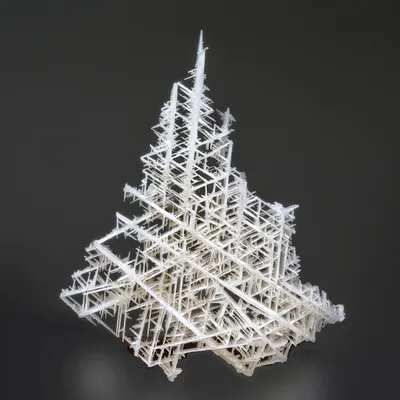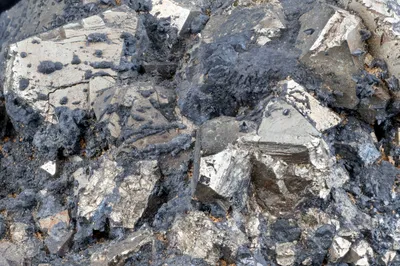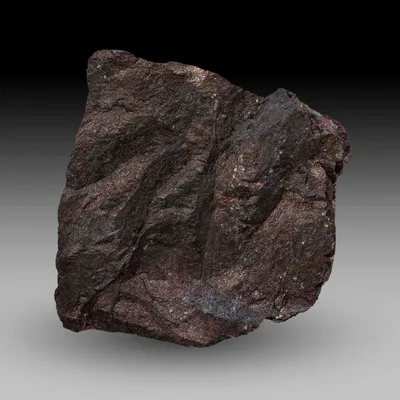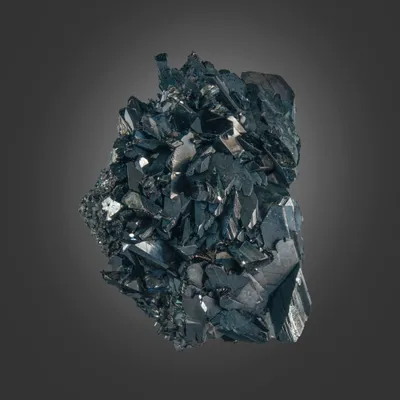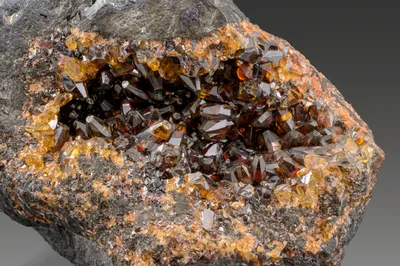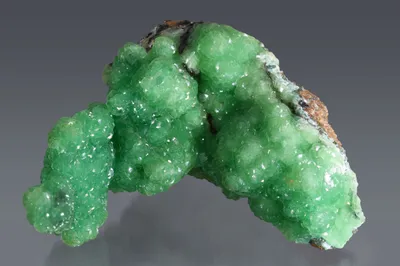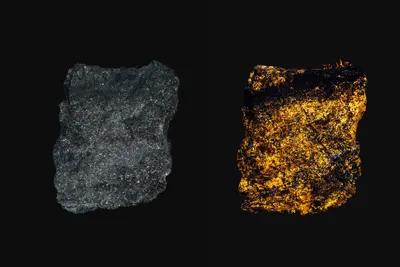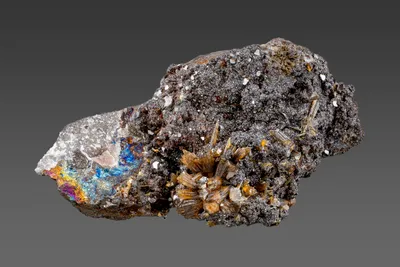Mineral Species
Brunogeierite
Type Locality
Yes
Composition
(Fe2+)2Ge4+O4
Crystal System
Cubic
Status at Tsumeb
Confirmed (type locality)
Abundance
Extremely rare
Distribution
Second oxidation zone
Paragenesis
Supergene
Entry Number
Species; TSNB64
Type Mineralogy
Brunogeierite was discovered in the early 1970s in material from the second oxidation zone. IMA 1972-004 was described by Ottemann and Nuber (1972) and named to honour Dr Bruno H. Geier (1902-1987), chief mineralogist of the Tsumeb Corporation Ltd between 1952 and 1972. The crystal structure was refined by Welch et al. (2001) and the currently accepted formula was proposed by Cempírek and Groat (2013) on the basis that the mineral contains quadrivalent germanium (rather than Ge2+ as originally believed).
General Notes
Brunogeierite was described from material collected from 29 Level in the second oxidation zone. The type material comprises galena and tennantite (with inclusions of renierite), stottite, smithsonite and minor cerussite. On a wider scale in the vicinity of the type specimen, lenses of massive sulphide were separated by oxidised material rich in limonite and dolomite, with smithsonite and cerussite. The sulphide lenses were germanium-enriched, comprising galena, germanite, renierite and tennantite, with subordinate and sporadic chalcocite, gallite, pyrite and sphalerite. The brunogeierite was observed "… mostly as rims encrusting tennantite…" and "… almost always surrounded with stottite" (Ottemann and Nuber, 1972). The rims of brunogeierite were typically 40 – 50 μm thick and only discernible mircoscopically; nevertheless, idiomorphic cubic forms were observable.
Brunogeierite was originally described as a "germanium ferrite spinel", (GeFe2O4)x (Fe3O4)x-1 with x given as 0.87 or 0.95 (based on two separate microprobe analyses; Ottemann and Nuber 1972). The composition was subsequently restated as (Ge2+,Fe2+)(Fe3+)2O4 (e.g., Anthony et al. 1990-2003). Cempírek and Groat (2013) pointed out that the occurrence of divalent germanium and trivalent iron in the same compound is "suspicious" and, on the basis of bond valence calculations, showed that the correct ideal end-member formula for brunogeierite is (Fe2+)Ge4+O4. Cempirek and Groat (2013) considered brunogeierite a member of the ringwoodite group; Back (2022) lists brunogeierite as a member of the ulvöspinel subgroup, oxyspinel group, in the spinel supergroup.
At Tsumeb, brunogeierite also occurs as cubic crystals, exceptionally to 5 mm (but usually sub-mm), grey-black, and encrusting cavities in tennantite. It is magnetic and it resembles magnetite visually.
Confusion with magnetite (possibly germanium-bearing) has been reported informally on the basis of EDS analysis (https://www.mindat.org/mesg-382632.html#537250; accessed June 2021); however, EDS will not readily distinguish magnetite from hematite. A specimen in the Southwood Collection (MS 2005.046) provisionally identified as brunogeierite (associated with schneiderhöhnite) was analysed by XRD and the cubic crystals were shown to be pseudomorphs of hematite after pyrite.
A specimen of brunogeierite in the Pinch Collection at Harvard University (MGMH 202.7.781), originally from the John Innes Collection, comprises a matrix of massive tennantite / renierite ore in which a shallow vug is lined with platy crystals and book-like aggregates of hematite (to 1.5 mm), translucent, straw-yellow crystals of siderite and tiny black adamantine crystals (< 1 mm) of brunogeierite.
Associated Minerals
cerussite; chalcocite; gallite; germanite; hematite; leiteite; pyrite; quartz; renierite; schneiderhöhnite; siderite; smithsonite; sphalerite; stottite; tennantite-(Zn)
